Oral
Prostate MRI: Emerging Techniques & Clinical Impact
ISMRM & ISMRT Annual Meeting & Exhibition • 10-15 May 2025 • Honolulu, Hawai'i

| 08:15 |
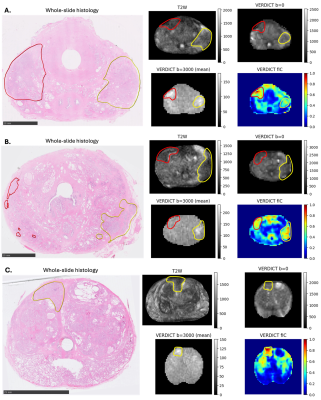 |
0800. Revealing
Invisible Prostate Cancer with VERDICT-MRI

M. Masramon, M. Mathew, J. Clemente, A. Retter, N.
Thorley, B. Kanber, E. Dineen, G. Shaw, V.
Kasivisvanathan, M. Carter, A. Haider, A. Freeman, D.
Atkinson, D. Alexander, S. Punwani, E. Panagiotaki
University College London, London, United Kingdom
Impact: Integrating VERDICT-MRI into clinical imaging
could enhance detection of previously invisible prostate
cancer lesions, allowing for more precise stratification and
more informed, personalized treatment strategies,
potentially improving patient outcomes.
|
| 08:27 |
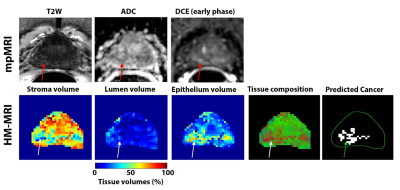 |
0801. Prospective
Validation of Hybrid Multidimensional MRI for Prostate Cancer
Detection using Targeted Biopsy: Comparison with PIRADS
A. Chatterjee, A. Yousuf, R. Engelmann, C. Harmath, L.
Reynold, T. Antic, M. Guircanu, G. Karczmar, A. Oto
University of Chicago, Chicago, United States
Impact: HM-MRI provides automated, quantitative image
interpretation, standardized image acquisition, and
reproducible results that improves MR-US fusion biopsy by
providing more reliable detection of csPCa compared to
PIRADS based evaluation by expert radiologists and
potentially reduce the number of unnecessary biopsies.
|
| 08:39 |
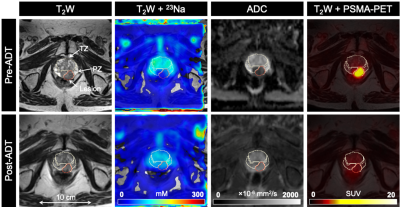 |
0802. Changes
in Sodium MRI, Diffusion-Weighted MRI, and PSMA-PET 3-Months
Post-Androgen Deprivation Therapy in Patients with Prostate
Cancer
J. Tan, A. Akbari, V. Kalia, T. Scholl, J. Thiessen, G.
Bauman
Western University, London, Canada
Impact: For the first time, sodium MRI was used to
measure changes in tissue sodium concentration pre- and
post-androgen deprivation therapy in patients with prostate
cancer. These findings may provide further insight on tumour
response to ADT at a molecular level.
|
| 08:51 |
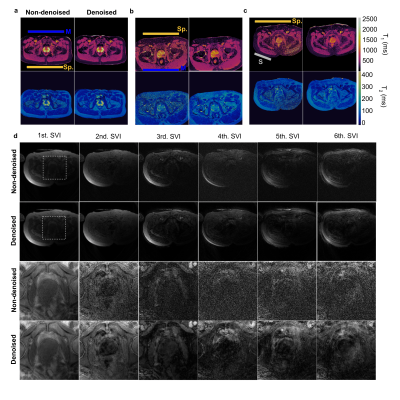 |
0803. Prostate
MR Fingerprinting T1 and T2 quantification at 0.55T using tensor
denoising
J. Fajardo, T. Kaur, R. Rizzo, N. Seiberlich, V. Gulani, Y.
Jiang
University of Michigan, Ann Arbor, United States
Impact: We show prostate lesions’ T1 and
T2 values
from 0.55T MR Fingerprinting can be detected with
statistical significance. By assessing accuracy, precision
and robustness to noise, we potentially enable the study of
prostate cancer quantitative characterization at 0.55T.
|
| 09:03 |
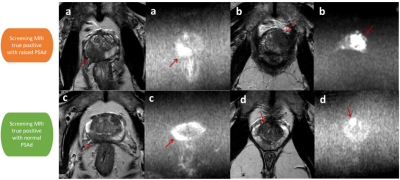 |
0804. The
Imaging Findings of an Abbreviated Biparametric MRI Protocol for
Prostate Cancer Screening

N. Thorley, E. Stallard, G. Brembilla, M. Emberton, C.
Moore, S. Punwani
University College London, London, United Kingdom
Impact:
Prostate MRI may have value in prostate cancer screening independently of prostate-specific antigen testing, offering an opportunity for early cancer detection. Future research is needed to optimise the screening approach to make MRI a more feasible, cost-effective screening tool. |
| 09:15 |
 |
0805. Biparametric
prostate MRI with super-resolution deep learning reconstruction:
image quality assessment using PI-QUAL version 2
A. Nakamoto, T. Honda, S. Matsumoto, T. Ota, H. Fukui, K.
Kiso, K. Kaketaka, T. Tanigaki, H. Tarewaki, Y. Koyama, Y.
Yamashita, Y. Kassai, M. Tatsumi, M. Hori, N. Tomiyama
Osaka University Graduate School of Medicine, Suita, Japan
Impact: SR-DLR improves both T2WI and DWI image quality
in prostate MRI, resulting in improved PI-QUAL scores. This
technique may have the potential to improve the diagnostic
accuracy of prostate biparametric MRI of the prostate.
|
| 09:27 |
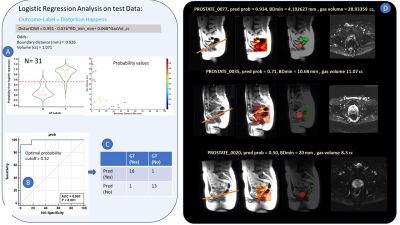 |
0806. Detection
of Rectal Gas Induced Artifacts in Diffusion Weighted MR Images
V. Singhal, S. Chatterjee, M. Srivastava, U. Patil, C.
Bhushan, A. Guidon, D. Shanbhag
GE HealthCare, Bengaluru, India
Impact: The study highlights that rectal gas-based
impact on DWI image quality can be predicted using
parameters affecting EPI-DW distortion. This will be useful
for technologist to make informed choice for DWI acquisition
scan planning.
|
| 09:39 |
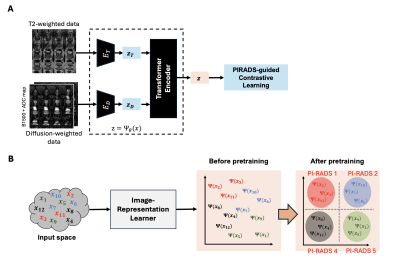 |
0807. Sorting
out PI-RADS 3: A radiologist-assist tool using representation
learning to avoid unnecessary biopsies
L. Umapathy, P. Johnson, T. Dutt, A. Tong, S. Chopra, D.
Sodickson, H. Chandarana
NYU Grossman School of Medicine, New York, United States
Impact: Powered with PI-RADS guided representational
learning, deep learning models can provide radiologists with
additional information to disambiguate intermediate risk
PI-RADS3 assessments, avoiding unnecessary biopsies, and
potentially helping patient retention in active surveillance
protocols.
|
| 09:51 |
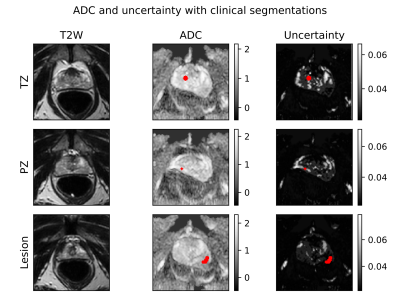 |
0808. A
device and method for in-vivo calibration of ADC measurements in
prostate cancer
F. Bolton, A. Lamb, N. Thorley, T. Hampshire, S. Punwani, D.
Atkinson, X. Golay, A. Oliver-Taylor
Gold Standard Phantoms Limited, Sheffield, United Kingdom
Impact: This work demonstrates the first in-vivo SI
traceable ADC calibration, enabling bias correction and
uncertainty quantification on a voxel-wise basis. This is a
key step towards establishing ADC as a reliable quantitative
imaging biomarker for multicenter oncology studies.
|
| 10:03 |
 |
0809. Hyperpolarized
[1-13C]pyruvate to [1-13C]lactate Conversion Rate with mpMRI to
Distinguish Pathologically Aggressive Prostate Cancer
M. Gibbons, H-Y Chen, P. Larson, J. Gordon, J. Slater, R.
Aggarwal, M. Cooperberg, P. Carroll, R. Delos Santos, J.
Simko, R. Nolley, D. Peehl, R. Sriram, S. Noworolski, D.
Vigneron, J. Kurhanewicz, R. Bok
University of California, San Francisco, San Francisco, United States
Impact: There is a pressing clinical need to distinguish
aggressive from indolent prostate cancer (PCa).
Hyperpolarized [1-13C]pyruvate
magnetic resonance imaging in combination with 1H
multiparametric MRI has demonstrated potential to identify
aggressive disease with high accuracy.
|
The International Society for Magnetic Resonance in Medicine is accredited by the Accreditation Council for Continuing Medical Education to provide continuing medical education for physicians.